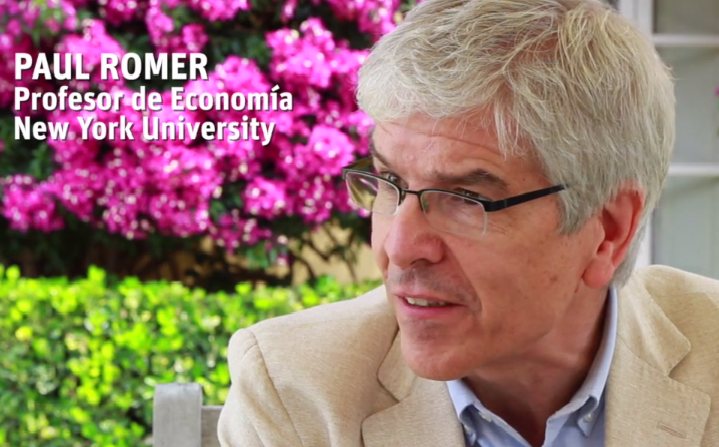Este artículo está también disponible en / This post is also available in: Spanish
Español | English
Paul Romer, an economist and policy entrepreneur, is University Professor at New York University (NYU) and founding director of the NYU Stern Urbanization Project, where he also leads the Charter Cities initiative. The Urbanization Project conducts applied research on the many ways in which policymakers in the developing world can use the rapid growth of cities to create economic opportunity and undertake systemic social reform. Romer is also the interim director of NYU’s Marron Institute on Cities and the Urban Environment.
This article is part of a series of interviews that were conducted during the Urban Sustainability Course organized by the Emerging and Sustainable Cities Initiative (ESCI), Universidad Internacional Menéndez Pelayo and the City of Santander between July 28 and August 1, 2014. Learn more about the course here.
Watch the full interview here.
ESCI: In recent years we have seen a shift from nation states to cities in the development discussion. In your opinion, what is the role that cities have today—particularly emerging ones—in promoting countries’ progress and economic development?
Cities have always been a very important level of government. What is happening now is that opinion leaders are suddenly discovering something that has been true for a long time.
City governments provide many of the government services that make an economy work. They keep people safe through public safety and by fighting crime, provide public health, public education, and maintain public space. All of these are things that are done by cities.
The other interesting thing about cities as a unit of government is that they face more competition. People can leave if they feel that their city is badly run and go to a city that is run better. In a big country, they can even do this without having to cross the border. So city leaders have to act as if they work in a more competitive environment that makes city government pragmatic and often more effective.
ESCI: What is sustainability, and what is the biggest challenge that cities face to achieve it?
I don’t use the word sustainable, honestly. I don’t use resilient either. I think these words have a nice feeling, but we don’t know what they mean. It can mean that a city keeps doing the same things that it has always been doing, but no successful city keeps doing the same things over and over again.
In 1900, New York City was a base for manufacturing; today it is a base for services. The same is true for companies. In 1900, General Electric did something very different from what it does now. So we can’t use sustainable to mean keep doing exactly what we are doing now. In a rapidly-changing and growing world, the only strategy that is possible is one that allows for flexibility, that keeps options open and lets us adjust as new things emerge.
ESCI: What are the biggest challenges for a mayor?
In the developing world, the biggest challenge for a mayor is to plan for expansion. The kind of work that we are doing in Colombia and Ethiopia is helping mid-sized cities plan for a very significant expansion because so many people want to move into cities.
Once you have made enough room—and sometimes it takes a lot of room to plan for expansion, a fivefold or tenfold increase in the built area—the second challenge that any city leader has to manage is crime. If a city is not safe, people will leave or they won’t come.
Watch the full interview here.



Leave a Reply